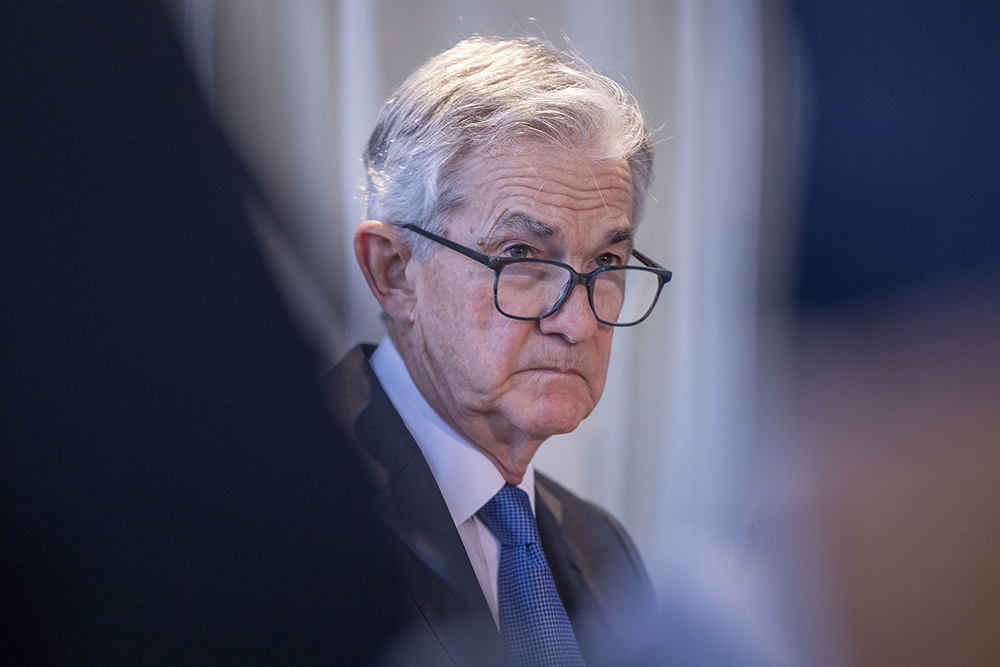
受利率高企、持续通胀、贸易下滑和中国经济复苏面临阻力的影响,2024年全球经济增速将连续第三年放缓。
这是世界银行(World Bank)描绘的未来发展图景。该银行在1月9日预测,2024年全球经济将仅增长2.4%,低于2023年的2.6%、2022年的3%和2021年的6.2%,而2021的增长率反映了从2020年新冠疫情带来的衰退冲击中实现强劲复苏。
全球紧张局势加剧,尤其是以色列-哈马斯战争和俄乌冲突引发的紧张局势,可能会导致增长进一步放缓。世界银行的官员担心,债台高筑的贫穷国家无力为应对气候变化和贫困问题进行必要的投资。
世界银行的首席经济学家英德米特·吉尔在一份声明中说:“近期增长将继续疲软,使许多发展中国家——尤其是最贫穷的国家——陷入困境:债务水平高到让国家陷入瘫痪,而且几乎每三个人中就有一个人难以获得食物。”
近年来,全球经济在面对一次又一次的冲击时表现出了惊人的韧性:新冠疫情、俄乌冲突、全球通胀重新抬头,以及各国央行为控制物价上涨而激进加息。世界银行现在表示,2023年全球经济增速比6月的增长预期上调0.5个百分点,并得出结论:“全球经济衰退的风险已经消退。”
到2023年,美国仍然是领头羊,去年的增长率可能达到2.5%,较世界银行年中的预测上调1.4个百分点。世界银行拥有189个成员国,致力于帮助全球最贫困的国家,该银行预计,由于利率上升削弱了借贷和支出,美国2024年的经济增速将降至1.6%。
自2022年3月以来,美联储(Federal Reserve)已经上调了11次利率。在美联储的激进加息下,美国的通胀率从2022年年中达到的40年高点降至接近美联储2%的目标水平。
利率高企也抑制了全球通货膨胀,世界银行预计,全球通货膨胀率将从2023年的5.3%下降到2024年的3.7%和2025年的3.4%,但依然高于新冠疫情前的平均水平。
中国是仅次于美国的世界第二大经济体,预计2024年的经济增长率为4.5%,2025年为4.3%,与2023年的5.2%相比大幅下降。中国经济几十年来一直是全球经济增长的主要引擎,但近年来增速放缓。消费者情绪低落,青年失业率居高不下,人口老龄化加剧,削弱了其增长能力。
中国经济增长放缓可能会损害向中国市场供应大宗商品的发展中国家,比如煤炭生产大国南非和铜生产大国智利。
世界银行预计,欧元区20个国家2024年的经济增速将维持在0.7%,较2023年0.4%的增速略有改善。预计日本经济将仅增长0.9%,为2023年增速的一半。(财富中文网)
译者:中慧言-王芳
受利率高企、持续通胀、贸易下滑和中国经济复苏面临阻力的影响,2024年全球经济增速将连续第三年放缓。
这是世界银行(World Bank)描绘的未来发展图景。该银行在1月9日预测,2024年全球经济将仅增长2.4%,低于2023年的2.6%、2022年的3%和2021年的6.2%,而2021的增长率反映了从2020年新冠疫情带来的衰退冲击中实现强劲复苏。
全球紧张局势加剧,尤其是以色列-哈马斯战争和俄乌冲突引发的紧张局势,可能会导致增长进一步放缓。世界银行的官员担心,债台高筑的贫穷国家无力为应对气候变化和贫困问题进行必要的投资。
世界银行的首席经济学家英德米特·吉尔在一份声明中说:“近期增长将继续疲软,使许多发展中国家——尤其是最贫穷的国家——陷入困境:债务水平高到让国家陷入瘫痪,而且几乎每三个人中就有一个人难以获得食物。”
近年来,全球经济在面对一次又一次的冲击时表现出了惊人的韧性:新冠疫情、俄乌冲突、全球通胀重新抬头,以及各国央行为控制物价上涨而激进加息。世界银行现在表示,2023年全球经济增速比6月的增长预期上调0.5个百分点,并得出结论:“全球经济衰退的风险已经消退。”
到2023年,美国仍然是领头羊,去年的增长率可能达到2.5%,较世界银行年中的预测上调1.4个百分点。世界银行拥有189个成员国,致力于帮助全球最贫困的国家,该银行预计,由于利率上升削弱了借贷和支出,美国2024年的经济增速将降至1.6%。
自2022年3月以来,美联储(Federal Reserve)已经上调了11次利率。在美联储的激进加息下,美国的通胀率从2022年年中达到的40年高点降至接近美联储2%的目标水平。
利率高企也抑制了全球通货膨胀,世界银行预计,全球通货膨胀率将从2023年的5.3%下降到2024年的3.7%和2025年的3.4%,但依然高于新冠疫情前的平均水平。
中国是仅次于美国的世界第二大经济体,预计2024年的经济增长率为4.5%,2025年为4.3%,与2023年的5.2%相比大幅下降。中国经济几十年来一直是全球经济增长的主要引擎,但近年来增速放缓。消费者情绪低落,青年失业率居高不下,人口老龄化加剧,削弱了其增长能力。
中国经济增长放缓可能会损害向中国市场供应大宗商品的发展中国家,比如煤炭生产大国南非和铜生产大国智利。
世界银行预计,欧元区20个国家2024年的经济增速将维持在0.7%,较2023年0.4%的增速略有改善。预计日本经济将仅增长0.9%,为2023年增速的一半。(财富中文网)
译者:中慧言-王芳
Hobbled by high interest rates, persistent inflation, slumping trade and a diminished China, the global economy will slow for a third consecutive year in 2024.
That is the picture sketched by the World Bank, which forecast on January 9 that the world economy will expand just 2.4% this year. That would be down from 2.6% growth in 2023, 3% in 2022 and a galloping 6.2% in 2021, which reflected the robust recovery from the pandemic recession of 2020.
Heightened global tensions, arising particularly from Israel’s war with Hamas and the conflict in Ukraine, pose the risk of even weaker growth. And World Bank officials express worry that deeply indebted poor countries cannot afford to make necessary investments to fight climate change and poverty.
“Near-term growth will remain weak, leaving many developing countries — especially the poorest — stuck in a trap: with paralyzing levels of debt and tenuous access to food for nearly one out of every three people,” Indermit Gill, the World Bank’s chief economist, said in a statement.
In recent years, the international economy has proved surprisingly resilient in the face of shock after shock: the pandemic, Russia’s invasion of Ukraine, resurgent global inflation and the burdensome interest rates that were imposed by central banks to try to bring price increases back under control. The World Bank now says the global economy grew half a percentage point faster in 2023 than it had predicted back in June and concludes that “the risk of a global recession has receded.’’
Leading the way in 2023 was the United States, which likely registered 2.5% growth last year — 1.4 percentage points faster than the World Bank had expected in mid-year. The World Bank, a 189-country anti-poverty agency, expects U.S. growth to decelerate to 1.6% this year as higher interest rates weaken borrowing and spending.
The Federal Reserve has raised U.S. interest rates 11 times since March 2022. Its strenuous efforts have helped bring U.S. inflation down from the four-decade high it reached in mid-2022 to nearly the Fed’s 2% target level.
Higher rates are also taming global inflation, which the World Bank foresees sinking from 5.3% last year to 3.7% in 2024 and 3.4% in 2025, though still above pre-pandemic averages.
China’s economy, the world’s second-largest after the United States, is expected to grow 4.5% this year and 4.3% in 2025, down sharply from 5.2% last year. China’s economy, for decades a leading engine of global growth, has sputtered in recent years: Its overbuilt property market has imploded. Its consumers are downcast, with youth unemployment rampant. And its population is aging, sapping its capacity for growth.
Slumping growth in China is likely to hurt developing countries that supply the Chinese market with commodities, like coal-producing South Africa and copper-exporting Chile.
The World Bank expects the 20 countries that share the euro currency to eke out 0.7% growth this year, a modest improvement on 0.4% expansion last year. Japan’s economy is forecast to grow just 0.9%, half the pace of its 2023 expansion.






